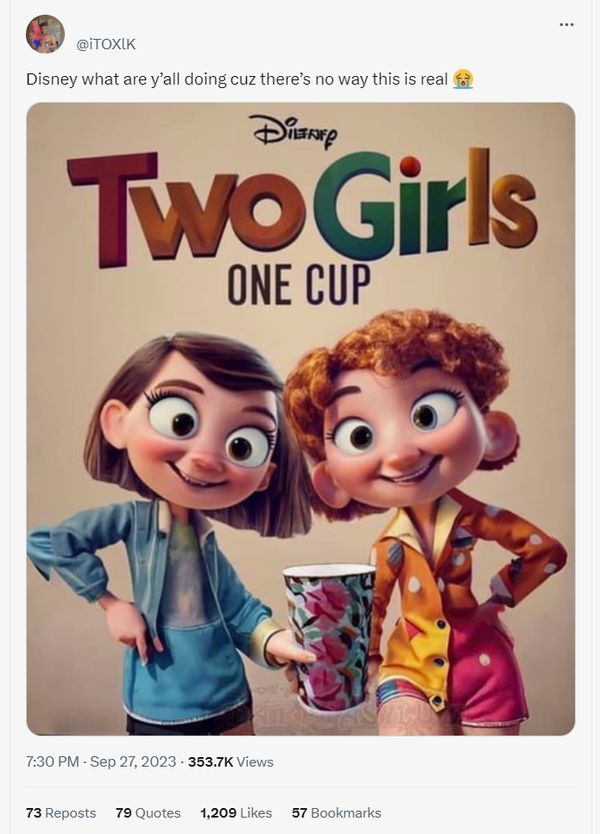Can you imagine a simple emoji story turning into one of the most infamous internet sensations? The internet is a labyrinth of content, but few creations have managed to capture and repel attention like Two Girls One Cup: The Emoji Story. This seemingly innocent string of emojis spiraled into something far more controversial. In mid-2007, it spread across digital platforms, leaving an indelible mark on internet culture. It wasn’t merely a viral video; it was a phenomenon that sparked debates about censorship, artistic expression, and the darker corners of the web.
Two Girls One Cup began as a trailer for the Brazilian scat fetish film Hungry Bitches, produced by MFX Media. What started as an obscure piece of adult content quickly transformed into a shock site sensation. The video’s notoriety grew exponentially, earning it the title of the most well-known shock site in internet history. As the original uncensored version made its rounds online, discussions erupted over its legality and ethical implications. The film's creator, Ira Isaacs, faced severe legal consequences, including a 48-month prison sentence handed down in January 2013 for producing and selling obscene materials.
| Bio Data & Personal Information | Career & Professional Information |
|---|---|
| Name: | Ira Isaacs |
| Date of Birth: | Unknown (Year of sentencing: 2013) |
| Place of Birth: | United States |
| Nationality: | American |
| Occupation: | Pornographic filmmaker |
| Notable Work: | Producer of Hungry Bitches (2007) |
| Legal Status: | Served 48 months in prison for obscenity charges |
| Reference: | Wikipedia - 2 Girls 1 Cup |
While the video itself remains a polarizing topic, its cultural impact cannot be denied. For some, it symbolizes the dangers of unchecked internet content, while others see it as a commentary on freedom of expression. Regardless of perspective, the ripple effects of Two Girls One Cup continue to influence discussions around internet regulation and media ethics. Its legacy extends beyond mere shock value—it serves as a case study for understanding how quickly and uncontrollably information can spread in the digital age.
In 2016, a user named 4ndy reignited interest in the topic with a cryptic tweet titled Two Girls One Cup: The Emoji Story. Using only symbols—☕, 👅, 💨, 😫, 💩—the message encapsulated the essence of the controversy without explicitly referencing it. This minimalist approach demonstrated the power of abstraction in modern communication. Emojis, once considered trivial, had evolved into a universal language capable of conveying complex ideas succinctly. By leveraging this medium, 4ndy highlighted how even the simplest forms of expression could evoke strong reactions.
Interestingly, Two Girls One Cup also found itself reimagined in unexpected contexts. A Christmas special parody capitalized on the concept of sharing and caring during the holiday season, injecting humor into what many deemed taboo. Such reinterpretations underscored the versatility of the original material and its ability to transcend initial intentions. Whether viewed as art or exploitation, the video left an undeniable imprint on popular culture.
Meanwhile, public figures occasionally referenced the controversy in unrelated settings. Actor Jon Bernthal, during a podcast episode discussing his role in The Walking Dead, casually mentioned the infamous video alongside another notorious moment from Prison Break. These fleeting mentions further embedded Two Girls One Cup into mainstream consciousness, proving that no corner of the internet is immune to its reach.
Despite its infamy, the video’s origins remain rooted in legitimate filmmaking. Produced under the banner of MFX Media, Hungry Bitches aimed to explore themes of desire and human connection through unconventional means. While critics dismissed it as exploitative, supporters argued for its artistic merit. The debate continues to rage, reflecting broader societal tensions between prudery and permissiveness.
Ultimately, Two Girls One Cup represents more than just a viral sensation. It embodies the complexities of contemporary internet culture—a space where creativity and controversy coexist, often blurring the lines between them. As technology advances and new platforms emerge, similar phenomena will undoubtedly arise, challenging norms and pushing boundaries. Understanding these dynamics requires acknowledging both the potential risks and rewards inherent in digital expression.
From its humble beginnings as a film trailer to its status as an internet legend, Two Girls One Cup has proven to be a resilient force. Its journey illustrates the unpredictable nature of online content and the profound impact it can have on global discourse. Even today, years after its initial release, the conversation surrounding it persists, inviting fresh perspectives and interpretations with each passing generation.
In conclusion, the story of Two Girls One Cup transcends its explicit content, offering valuable insights into the evolving landscape of digital media. It challenges us to rethink our perceptions of art, censorship, and community standards in an increasingly interconnected world. Though opinions may vary, one thing remains certain: the legacy of this enigmatic video will endure, shaping future dialogues about the intersection of technology and human experience.




